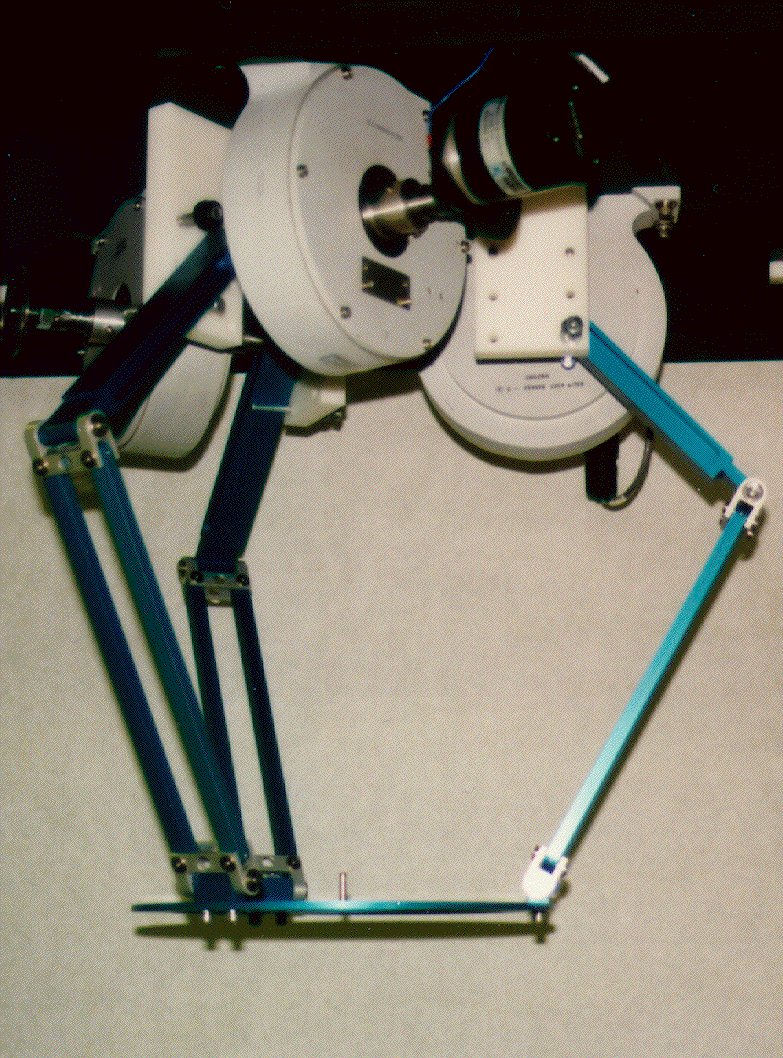 PROJECT BACKGROUND AND GOALS
PROJECT BACKGROUND AND GOALS
 PROJECT BACKGROUND AND GOALS
PROJECT BACKGROUND AND GOALSParallel manipulators are robotic devices that differ from the more traditional serial robotic manipulators by virtue of their kinematic structure. Parallel manipulators are composed of multiple closed kinematic loops. Typically, these kinematic loops are formed by two or more kinematic chains that connect a moving platform to a base, where one joint in the chain is actuated and the other joints are passive. This kinematic structure allows parallel manipulators to be driven by actuators positioned on or near the base of the manipulator. In contrast, serial manipulators do not have closed kinematic loops and are usually actuated at each joint along the serial linkage. Accordingly, the actuators that are located at each joint along the serial linkage can account for a significant portion of the loading experienced by the manipulator. Whereas the links of a parallel manipulator generally need not carry the load of the actuators. This allows the parallel manipulator links to be made lighter than the links of an analogous serial manipulator. Hence, parallel manipulators can enjoy the potential benefits associated with light weight construction such as high-speed operation and improved load to weight ratios.
Probably the most famous parallel manipulator is the Stewart platform. It was originally proposed by Stewart in 1965 as a flight simulator, and versions of it are still commonly used for that purpose. Since then, the Stewart platform has also been used for other applications such as milling machines, pointing devices, and an underground excavation device. Generally, the Stewart platform has six limbs, where each limb is connected to both the base and the moving platform by spherical joints located at each end of the limb. Actuation of the platform is typically achieved by changing the lengths of the limbs. While, these six-limbed manipulators offer good rigidity, simple inverse kinematics, and high payload capacity, they suffer the following disadvantages.
A three degree of freedom parallel manipulator that does not suffer from the first two of the listed disadvantages was designed by Clavel (1988) and others at the Swiss Federal Institute of Technology. The manipulator, called the DELTA robot, has only translational degrees of freedom. Closed-form solutions for both the inverse and forward kinematics have been developed for the DELTA robot. Additionally, the position and orientation of the moving platform are uncoupled in the DELTA design. However, the DELTA robot construction does employ spherical joints or spherical joints that are formed from revolute joints with intersection axes.
- Their direct kinematics are difficult to solve.
- Position and orientation of the moving platform are coupled.
- Precise spherical joints are difficult to manufacture at low cost.
A new parallel manipulator that eliminates the need for the spherical joints was invented by L.W. Tsai. This manipulator uses only revolute joints to constrain the moving platform to three translational degrees of freedom. Developing an understanding of this manipulator is the aim of the research.
 METHODOLOGY
METHODOLOGY
Five broad areas of the manipulator are investigated:
- Inverse and Forward Kinematics
- Manipulator Jacobian Relationships
- Workspace Determination and Optimization
- Dynamics
- Controls
 PROJECT RESULTS
PROJECT RESULTS
A prototype was built based upon the results of the research to demonstrate the manipulator. A photograph of the manipulator is shown below.
